Anouk expresses her inner most emotions through stitch and mixed media. Finding your niche in a creative world can be fraught with challenges especially when living alone in a large and impersonal city far from family and friends. In this interview, Anouk shares with us the life-changing moments that influenced her decision to forge an artistic career in textiles.
Since being selected in 2013 into Harbourfront Centre Artist-in-Residence program (for which she received the Dalglish Foundation Venture Award when she graduated), Anouk now lives in Toronto.
Born in a textile factory in 1980 (Québec Canada) to parents who were garment manufacturers, Textile Artist Anouk Desloges’ method of work and the plurality of techniques and media she uses has undoubtedly been influenced by that experience.
Anouk holds a BFA from Université Laval (Québec City) and a Diploma in Sculpture with honours from the Maison des Métiers d’Art de Québec. Her work has been awarded prizes and fellowships from a number of organizations, including both the Ontario and Québec Art Councils. She has exhibited in Canada, France, Guatemala, Latvia and some pieces are displayed in public and coveted in private collections.
Through her skilled methods of integrating stitch with mixed media, she brings intimate, mysterious and ambiguous thoughts into the public realm. Read on to discover more about this innovative and inspirational woman.
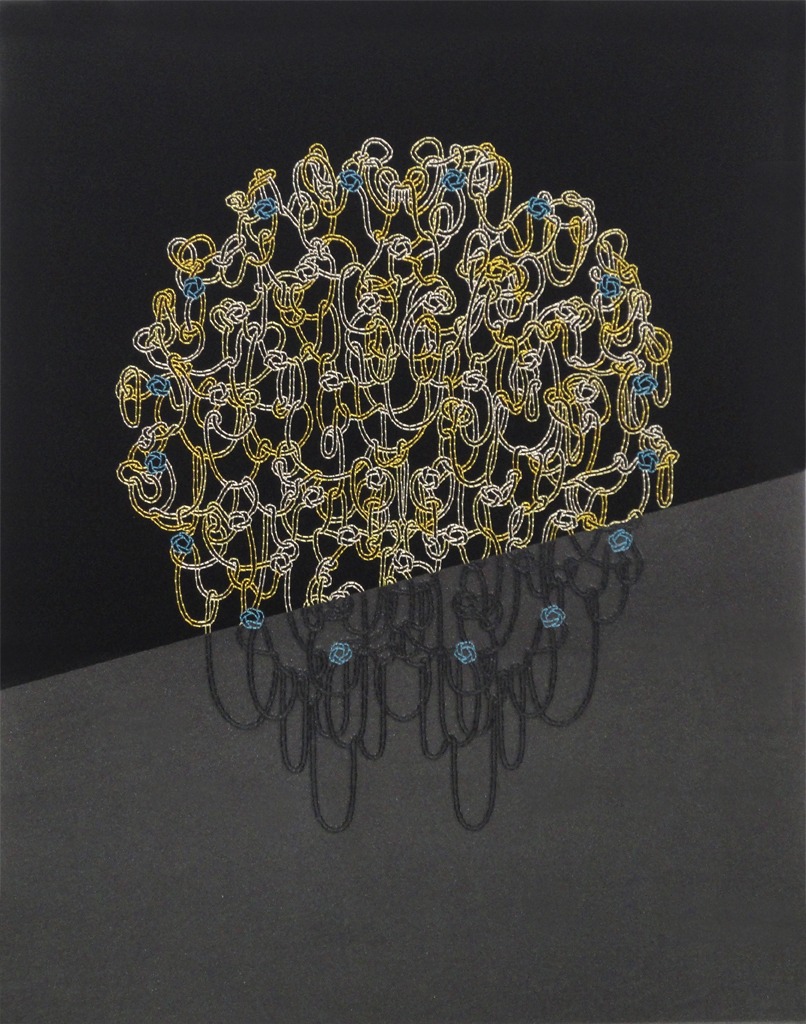
A pathway of creative play
TextileArtist.org: What initially attracted you to textiles as a medium? How was your imagination captured?
Anouk Desloges: Working with textile as a medium has never been a conscious choice. Rather, it was imposed on me at a very young age.
My parents owned garment factories for over thirty years and they basically worked 24/7. Instead of going to daycare, my playground was being placed in the midst of unlimited material and equipment. As a child, my dad would sit me down in front of a sewing machine; he would adjust its stitching speed and I would make one-of-a-kind pieces.
Experimenting with thread and making knotted bracelets has always been my favourite thing to do. It has followed me until today. Whether it is by working with thread or by representing its knots in my embroidered pieces, its lines are always present.
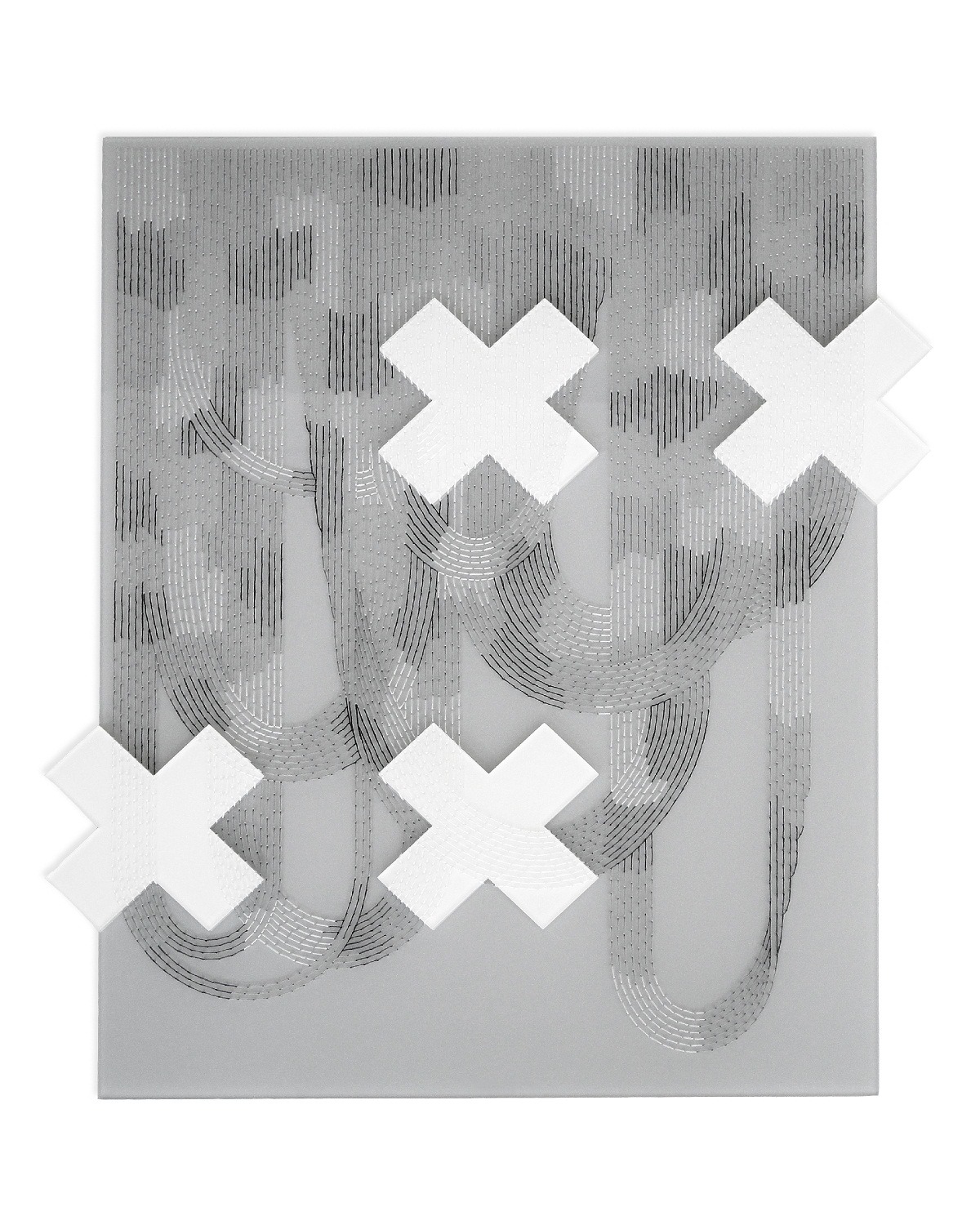
What or who were your early influences and how has your life/upbringing influenced your work?
To be honest, I was probably just a normal teenager, but for most of my life until my mid-thirties I didn’t feel that I could genuinely connect with people. It was probably due to the fact that I had been raised on my own while my parents were at work and my older (and only) sister), was too busy being herself.
Making things has always been of second nature to me, and something that gave my young life some sense and focus. I first considered art as a career path once I discovered the work of the surrealists. I was fascinated by its mystery and how it’s open interpretation is, more often than not, what we want it to be.
Much later I came upon Cale Lane’s work, in which reclaimed metal scraps are used to recreate intricate pieces, morphing into something so precious and beautiful. There were also the multi-layered, timeless sculptures of Valérie Blass that made me see beyond the original function of the object. Ultimately, my favourite: Sophie Calle, a conceptual artist whose work consists of making her own life, and especially the most intimate moments, a piece of art.
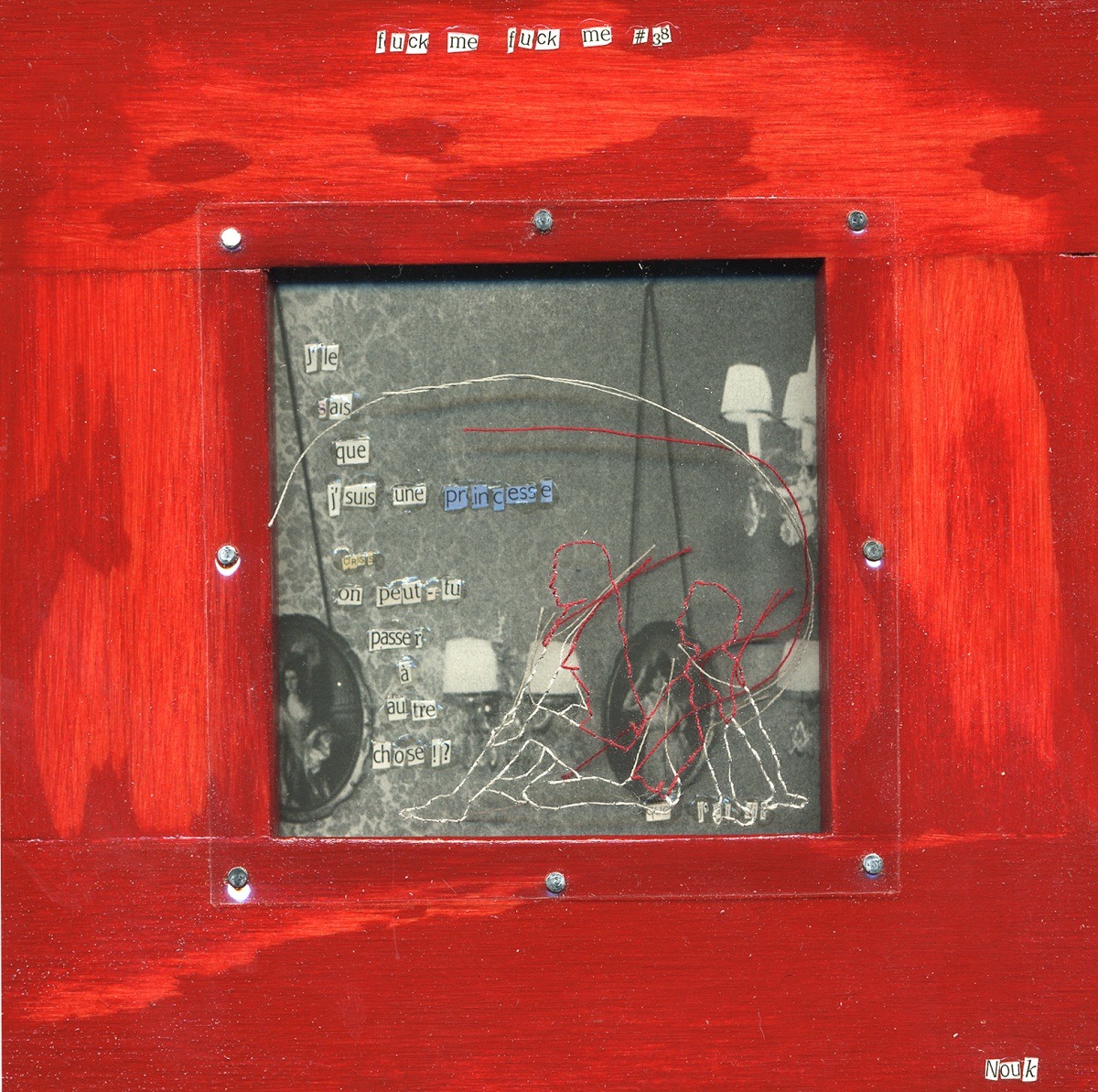
What was your route to becoming an artist?
Interestingly enough, my entire academic background is in sculpture. Even though I have no academic training in textiles, playing with thread has always been something I kept doing with no intention of exhibiting my finished work.
I was living alone in a small apartment in Québec City, and was about to graduate with a degree in sculpture, specializing in metalwork. My evenings were spent creating collages and embroideries that reflected my intimate life. Thus, instead of writing in a journal, I created 54 miniature pieces entitled “Fuck me fuck me #1-54” and impulsively applied for a prestigious show in Guatemala with these pieces.
To my delight, I was invited to present my work among a selection of international emerging artists. It was my very first exhibition outside of school. When I returned home, I became so involved in my personal projects that anything academic was becoming meaningless to me.
On presenting some of my projects to my teacher Jean-Pierre Morin, who was and still is a renowned artist in Canada, he took me aside and said something along the lines of: “You don’t have to become a sculptor if you don’t want to. You don’t even have to graduate if you don’t want to. You’re an artist and you should do what you feel like doing.”
From that moment, my relationship with art has dramatically shifted. I started bringing intimate/mysterious/ambiguous thoughts into the public realm and my material and techniques multiplied. Metal sculptures got pieced and embroidered, while acrylic sheets got laser cut, carved and painted.
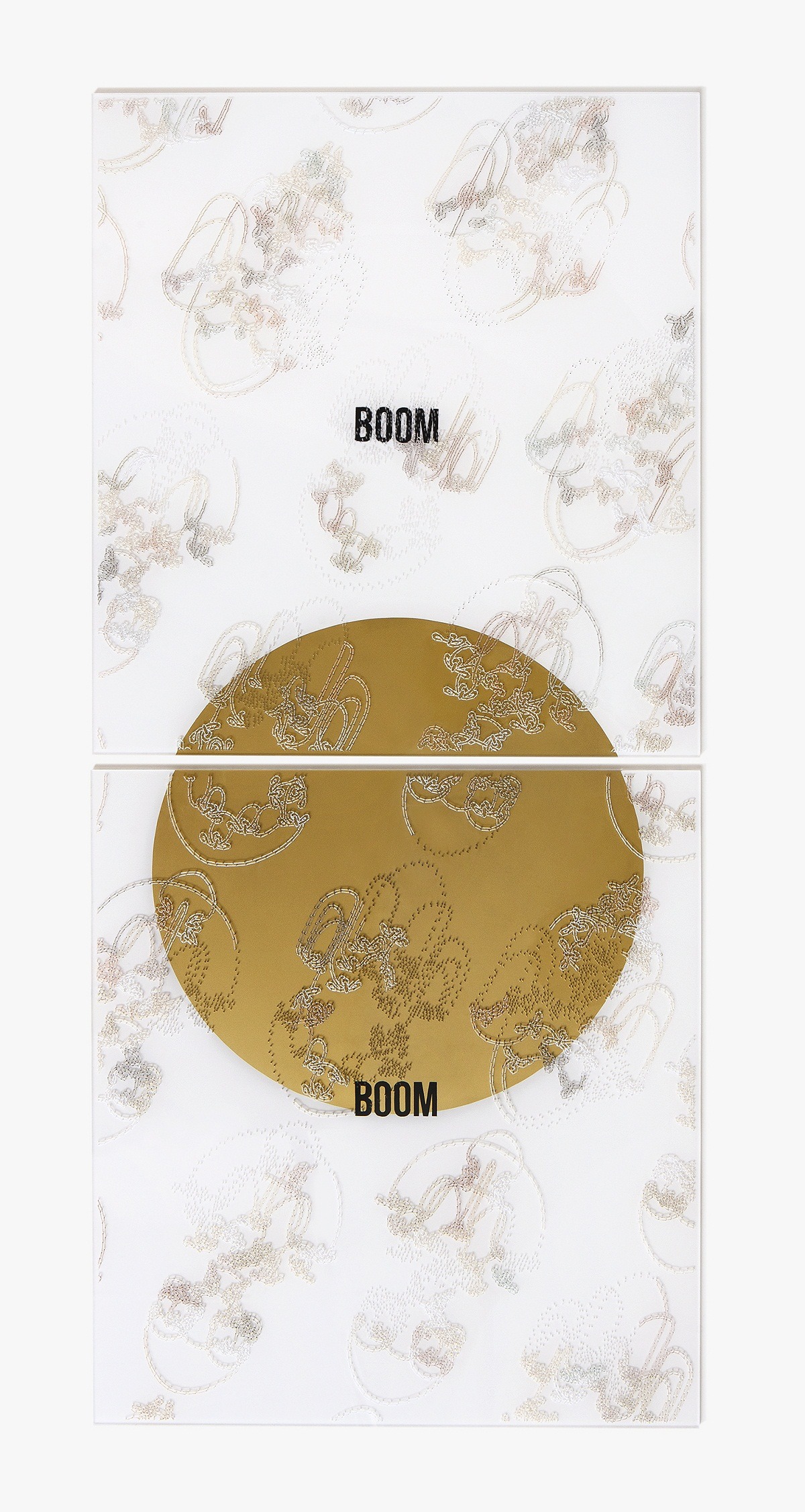
Thinking outside the box
Tell us about your process from conception to creation?
My sketchbook contains a lot more words than drawings, however, the initial concept changes tremendously in the making. The original idea succumbs to the act of materialization, yet prior to the end, the idea is investigated, deepened and deconstructed throughout the evolving phases.
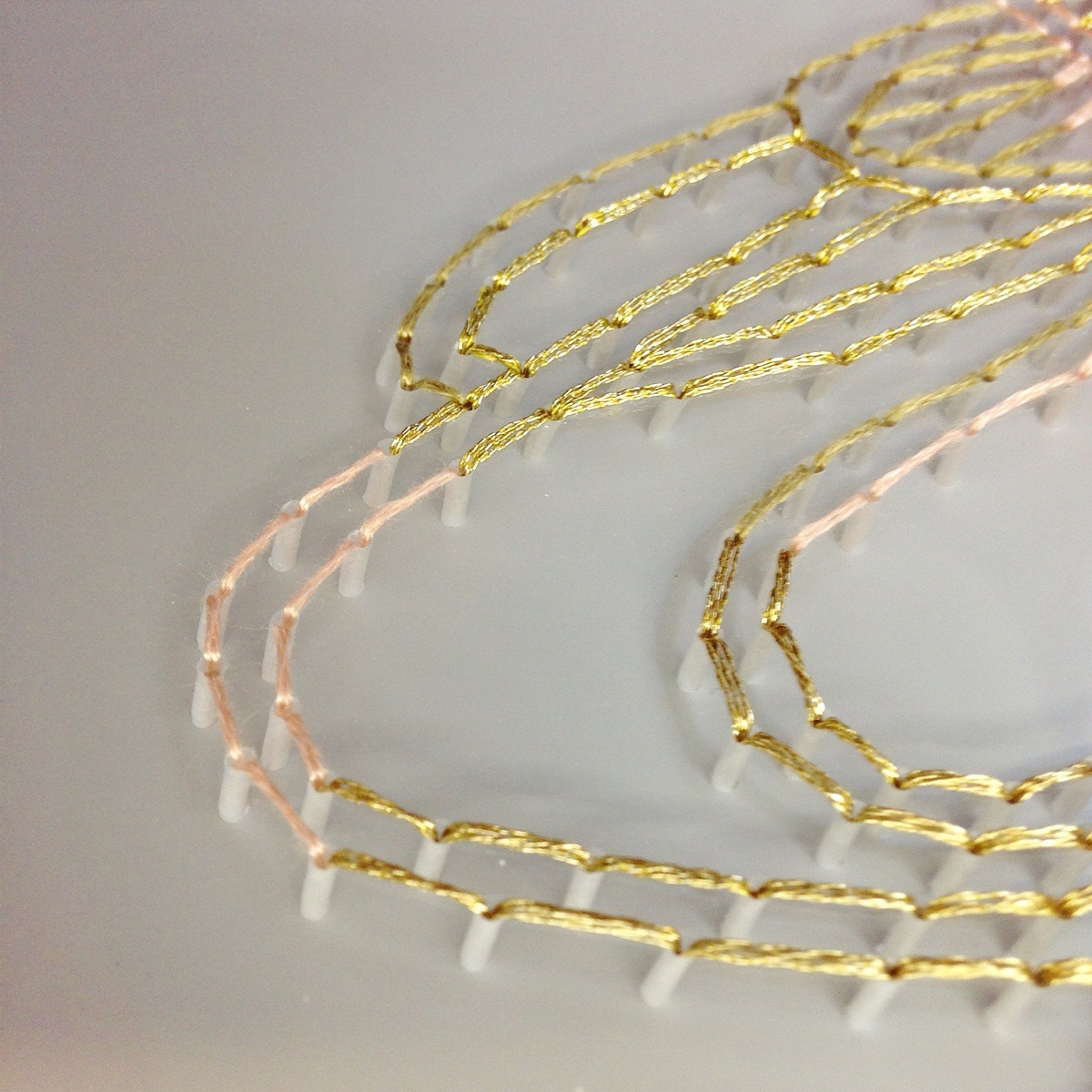
Tell us a bit about your chosen techniques and how you use them.
The embroidery is removed from its traditional support to adorn plastic and metal. Being trained as a sculptor, I juxtapose materials and techniques to create an illusion of depth and to reconsider the definition of two and three-dimensional compositions. In doing so, it is the thread itself that joins the perforated acrylic sheets one above the other.
The background reveals quotes, colour range, textures, and so on. Altogether, the pieces tend to reflect mysterious themes and unconventional techniques related to fibre art.
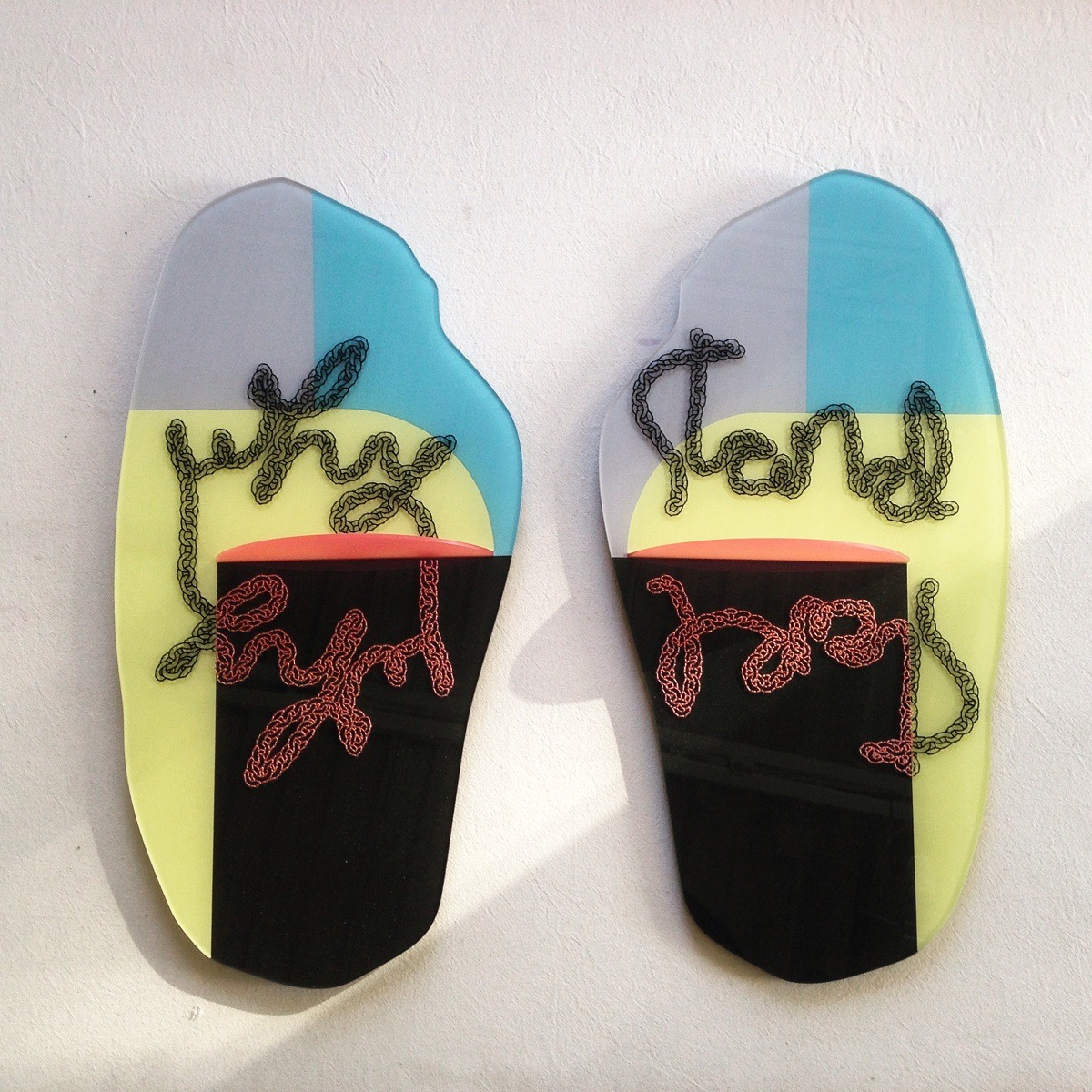
What currently inspires you?
Interpreting the thoughts that linger in my mind, whether it is based on personal experiences or current topics. The interpretations become intimate and filled with imagination, at once vulnerable, fragile and precious. The pieces present symbolic allegories and literary allusions according to developed themes in collaboration with participants or from autobiographical inspirations.
For example, I made “Why Stare Why Dare” following a solar eclipse that occurred in North America last year. Meanwhile, the protest at Standing Rock Sioux Reservation in North Dakota was put to an abrupt end by the new American administration.
Even though I like to think that I am socially and politically engaged, I watched their entire fight against the implementation of a pipeline on their sacred land from the comfort of my living room. In this context, I created two symmetrical pieces of acrylic, each in the shape of a standing rock – mirrored reflections of one another.
The backgrounds are painted with the colour of the sky and the sun. Two more pieces are cut in the shape of a semi-circle and fixed perpendicularly on to the “rocks” to recreate a shadow. On each surface, a chain that formed the phrase “Why Stare Why Dare” is embroidered.
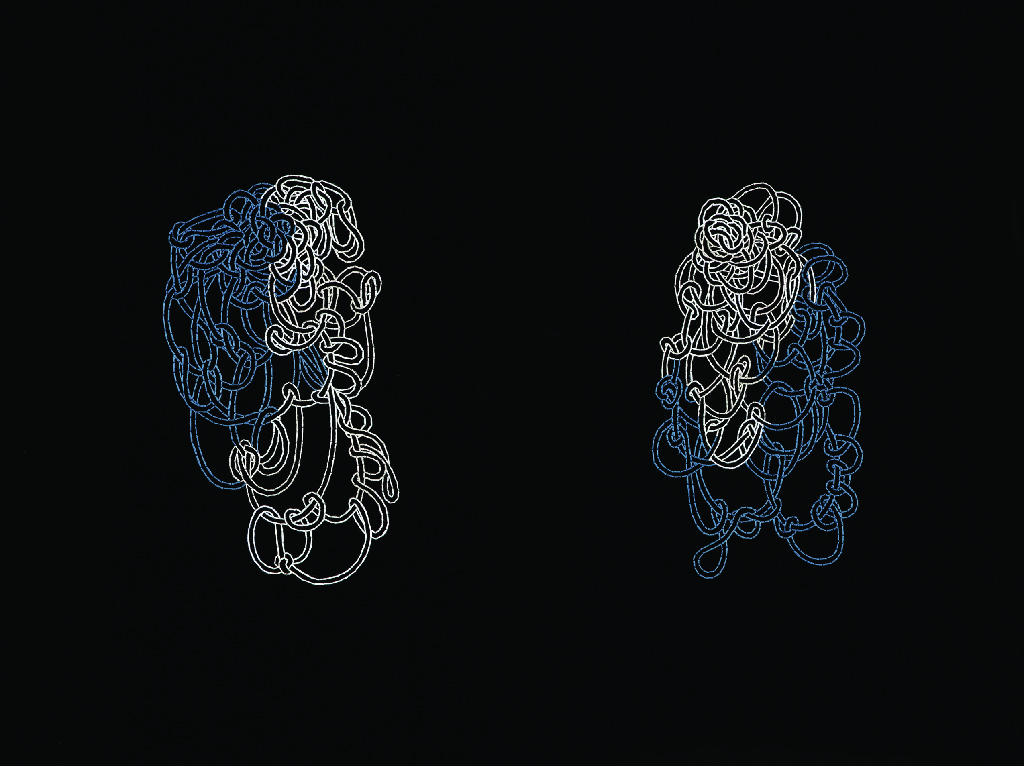
Deciphering the code
Tell us about a piece of your work that holds particularly fond memories and why?
There’s no specific reason why I am so fond of “Am I Yours You Are Mine” but I ended up giving it to my father because I wanted to keep it close by. The title is half readable / half hidden within the entangled thread and every time there are guests over at his place, he asks me to show them where it is.
It embarrasses me when my father asks me to show where the title is because every time this happens his guests look hesitant and confused. They would like to have it all easy, written clearly in black and white, in bold letters. However, I believe in secrets and mystery. From time to time, hidden messages should be taken as they are and precious to the person to whom they are revealed.
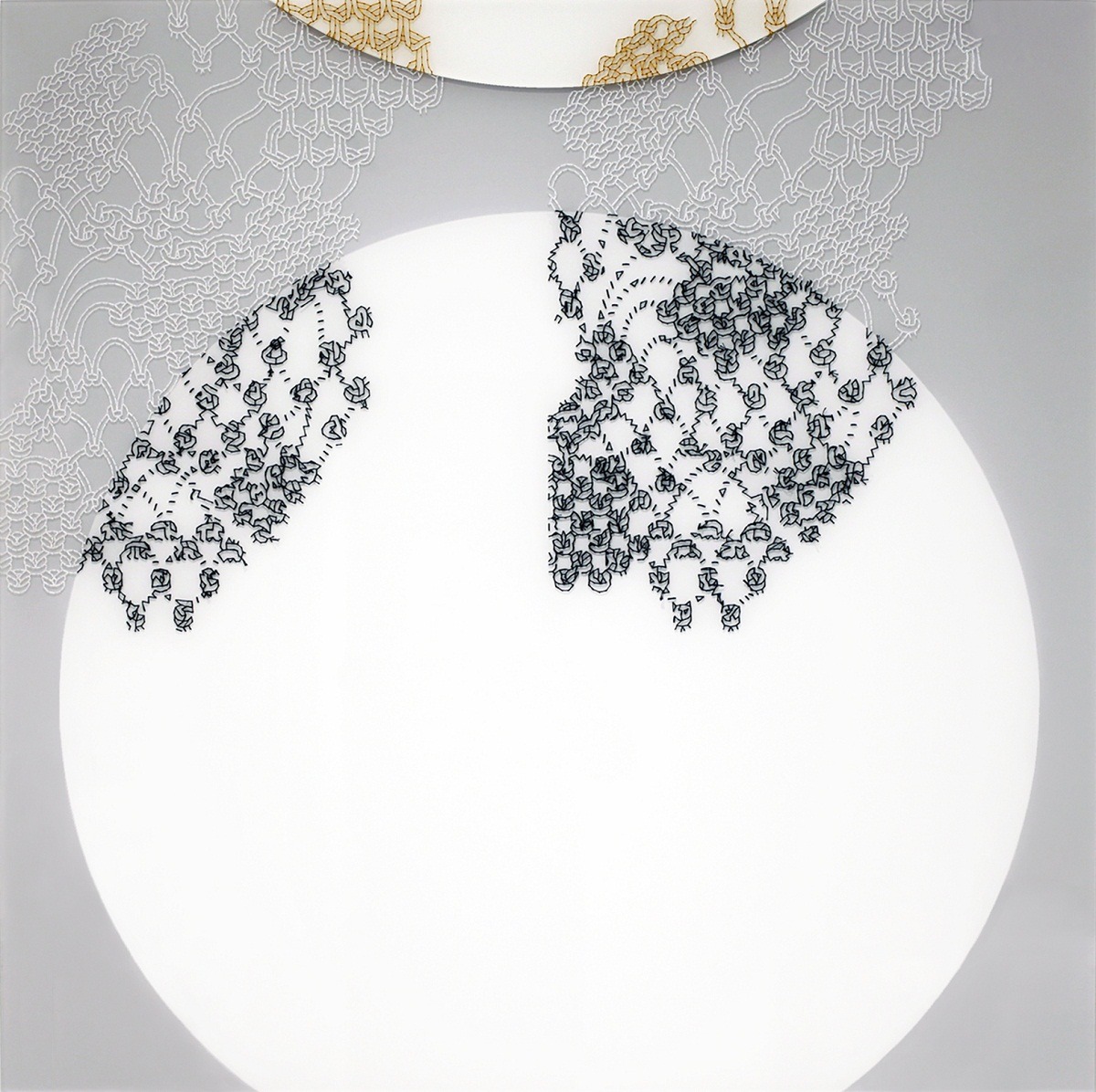
How has your work developed since you began and how do you see it evolving in the future?
As I move towards multi-layered embroideries, my imagery is gradually moving out of its frame. I tend to connect the pieces with one another as if they were having a dialogue.
Currently I am focused on a body of work entitled “Mons Testaceus”. It is a personal interpretation of an artificial hill located in Italy that is made out of tens of millions of amphora piled on top of one another.
It will consist of an installation composed of large-scale embroideries, moulded sculptures and other unusual explorations. It will include several symbols and hidden secrets–maybe there will also be big messages written boldly in black on white. Overall, it will be an occasion to tell a story that only the ones who are attentive can hear.
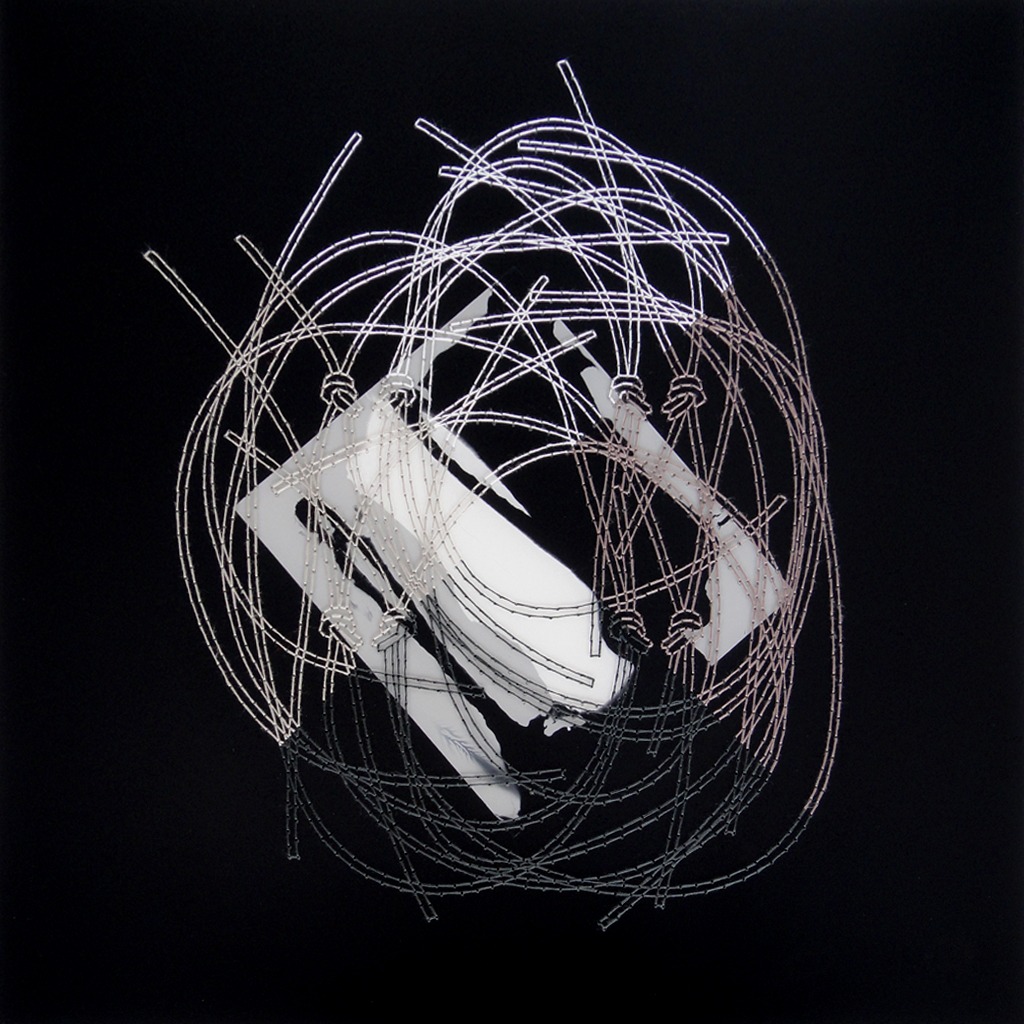
What advice would you give to an aspiring textile artist?
Someone once told me: “The worst thing that can happen to you is to have one idea.” In other words: never stick to your first and only idea. Allow the idea to wander off, let it grow, evolve and become mature.
For more information visit www.anoukdesloges.com
If you are inspired by this article, share it with your friends. Simply click on the buttons below!
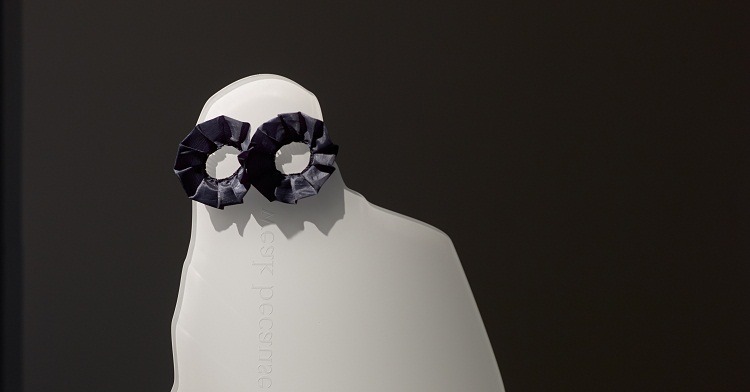
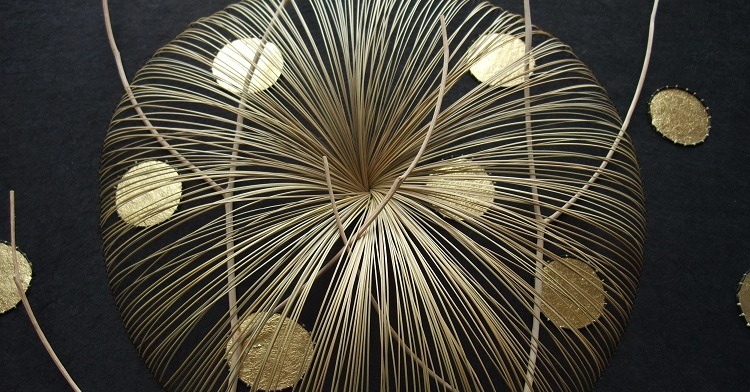
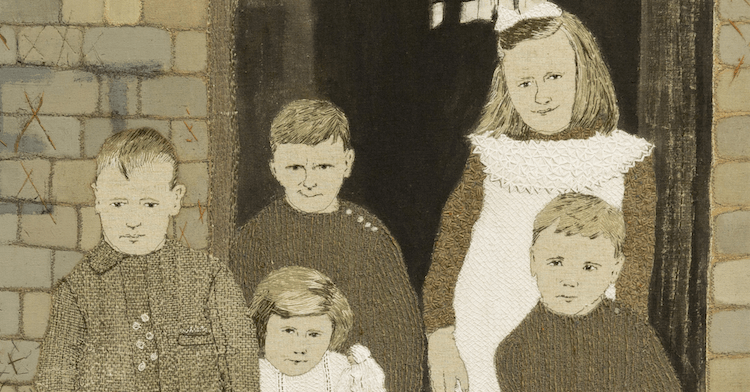
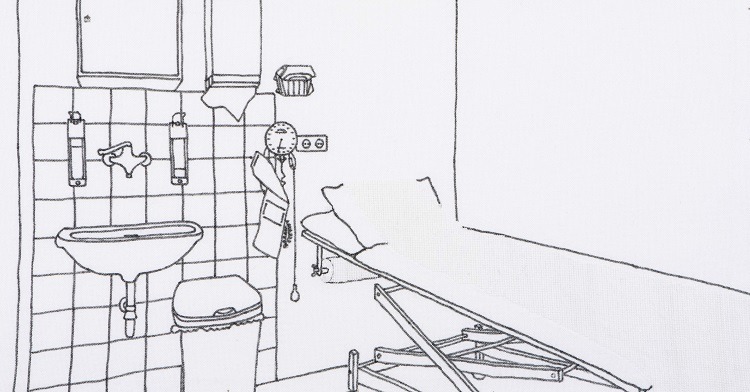
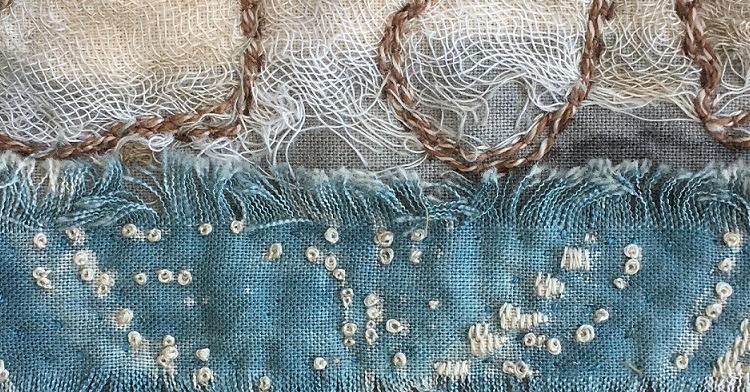
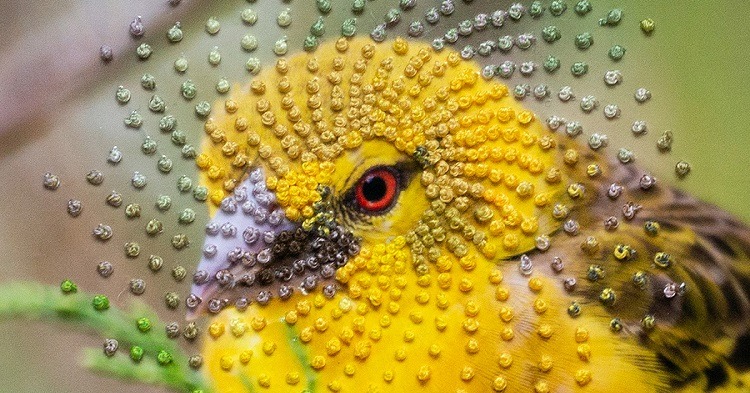
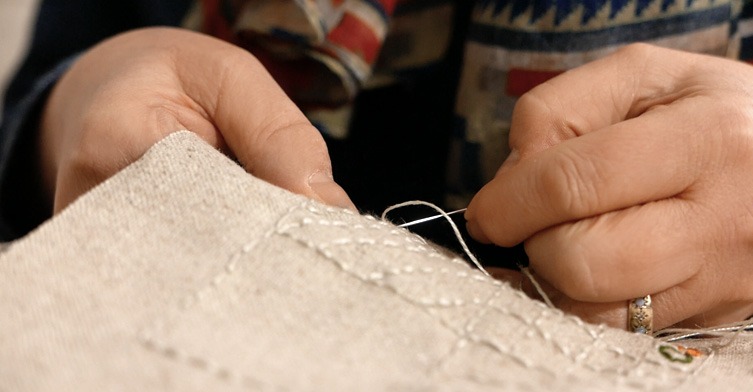
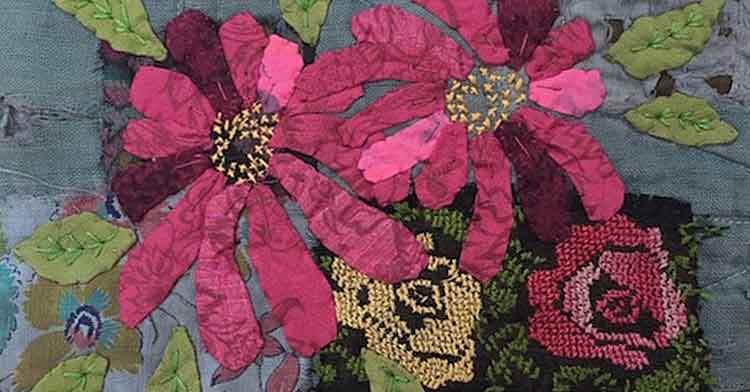
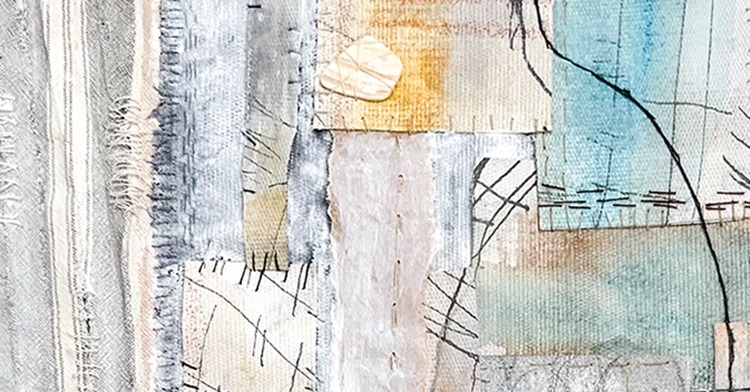
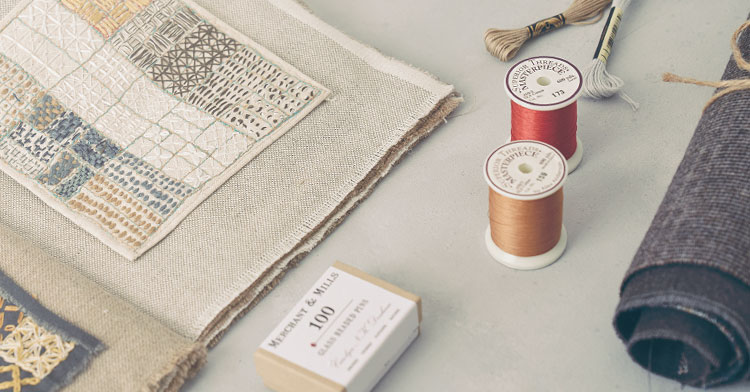
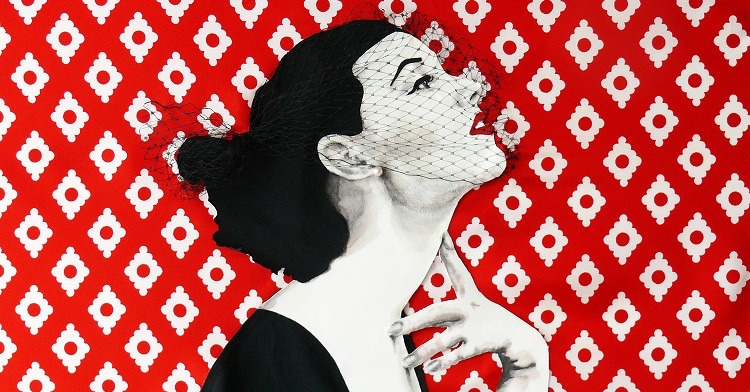
Comments